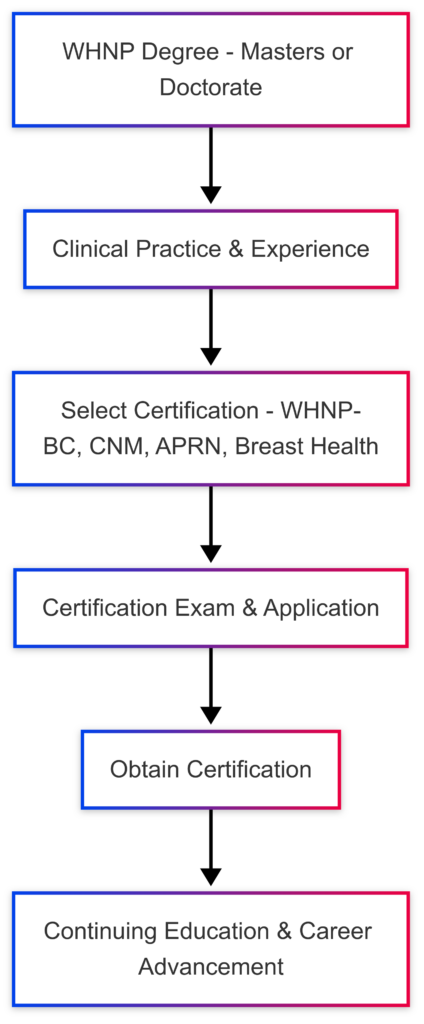Applying to nurse practitioner (NP) programs is a competitive process where every component of your application matters—especially your letters of recommendation. These letters provide admissions committees with crucial insights into your clinical abilities, academic potential, and personal qualities that transcend what’s visible on transcripts or resumes. This guide will walk you through who to ask, how to approach them, and how to ensure your recommendation letters strengthen your NP program application.
Who Should Write Your NP Program Recommendation Letters?
Most nurse practitioner programs require 2-3 letters of recommendation. Selecting the right recommenders is perhaps the most critical decision in this process. See our guide to enrolling in an online NP program.
Clinical Nursing Supervisors and Managers
Nursing managers and direct supervisors make excellent recommenders because they:
- Have observed your clinical decision-making abilities
- Can speak to your patient care skills
- Understand your work ethic and reliability
- Can address your interpersonal skills with patients and healthcare team members
When selecting a supervisor, choose someone who has directly observed your nursing practice over an extended period and can provide specific examples of your clinical excellence.
Nurse Practitioners or Physicians You Work With
Healthcare providers who collaborate with you clinically offer particularly valuable perspectives:
- They can evaluate your clinical judgment from a provider’s viewpoint
- They understand the demands of the role you’re aspiring to
- Their recommendations carry significant weight as they’re writing from the position you’re working toward
- They can address your potential for advanced practice responsibilities
These recommenders are especially valuable if they practice in the specialty area you’re pursuing.
Nursing Faculty Members
If you’ve completed recent academic coursework, professors who know your academic abilities well can address:
- Your critical thinking capabilities
- Writing and research skills relevant to graduate-level work
- Classroom participation and engagement
- Academic potential for rigorous NP coursework
Faculty recommendations are particularly important for programs emphasizing research or academic excellence, such as DNP nurse practitioner programs.
Who to Avoid Asking
Not all recommendations carry equal weight. Avoid requesting letters from:
- Non-healthcare professionals who cannot speak to your clinical abilities
- Healthcare workers who have only known you briefly
- Friends or family members, even if they work in healthcare
- Colleagues of equal rank who cannot evaluate your performance
- Famous or high-ranking individuals who don’t know your work personally
How to Ask for Recommendation Letters
Once you’ve narrowed down who you will ask for a recommendation letter, developing a solid strategy will boost your chances of success. Below are some key considerations to think about.
Timing Your Request
- Ask early: Request letters 6-8 weeks before application deadlines
- Consider workloads: Avoid asking during especially busy periods
- Provide deadlines: Clearly communicate when the letter needs to be submitted
The Approach: In-Person vs. Email
While an in-person request is ideal, a thoughtful email can be appropriate depending on your relationship:
In-person request example:
“Dr. Johnson, I’ve valued working with you in the ICU over the past two years. I’m applying to nurse practitioner programs focusing on acute care, and I believe your perspective on my clinical skills would be valuable. Would you be willing to write a strong letter of recommendation for my application?”
Email request template:
Subject: Request for NP Program Recommendation Letter
Dear [Name],
I hope this email finds you well. I’m preparing applications for nurse practitioner programs with a focus on [specialty] and am reaching out because your assessment of my clinical abilities would be particularly valuable to admissions committees.
During our time working together in [setting], you observed my [mention specific skills or experiences]. I believe you could speak to these abilities in a way that would strengthen my application.
Would you be willing to write a strong letter of recommendation for me? The application deadline is [date], and I would need the letter submitted by [date—at least 2 weeks before deadline].
If you agree, I’d be happy to provide my resume, personal statement, and other materials that might help you write a detailed letter.
Thank you for considering this request.
Sincerely,
[Your Name]
Providing Materials to Your Recommenders
Once someone agrees to write a letter, provide them with:
- Your current resume or CV
- Your personal statement or statement of purpose
- Information about the specific programs and their focus
- Deadlines and submission instructions
- A “brag sheet” highlighting accomplishments they may not be aware of
- Any specific requirements from the programs regarding letter content
“Brag Sheet” Essential Elements
| Category | What to Include | Example |
| Clinical Skills | Specific examples of exceptional patient care | Implemented new protocol for sepsis identification that improved response time by 22% |
| Leadership | Committees, projects led, initiatives started | Chaired unit-based practice council; mentored 5 new graduate nurses |
| Education | Relevant continuing education, certifications | Completed 40-hour trauma nursing course; CCRN certification |
| Patient Outcomes | Measurable impacts on patient care | Developed patient education materials that reduced readmission rates for CHF patients |
| Professional Growth | How you’ve developed as a nurse | Advanced from new graduate to charge nurse in 18 months |
Following Up with Recommenders
- Send a gentle reminder 2 weeks before the deadline if you haven’t received confirmation
- Check application portals to verify submission
- After submission, send a thoughtful thank-you note expressing gratitude regardless of admission outcome
Common Questions About NP Program Recommendation Letters
How recent should my recommenders’ knowledge of me be?
Ideally, recommenders should have worked with you within the past 2-3 years, with more recent experience preferred.
What if I’m switching specialties?
If you’re changing specialties (e.g., from adult to pediatrics), include at least one recommender who can speak to your adaptability and learning capabilities. Learn about nurse practitioner specialties.
What makes a recommendation letter stand out?
Strong letters include specific examples of your clinical excellence, leadership potential, and personal qualities rather than generic praise.
What if I’ve been out of school for many years?
If you’ve been out of school for more than five years, focus on professional recommendations rather than academic ones.
Put Together a Robust NP Program Application
Strong recommendation letters can significantly strengthen your nurse practitioner program application by providing external validation of your capabilities and potential. By strategically selecting recommenders who know your clinical work well, approaching them professionally, and providing them with comprehensive materials, you can secure letters that highlight your readiness for advanced practice nursing education.
Remember that recommendation letters should complement other components of your application by emphasizing qualities that might not be evident elsewhere. When chosen carefully and prepared thoughtfully, these letters become powerful advocates for your admission to competitive NP programs.











